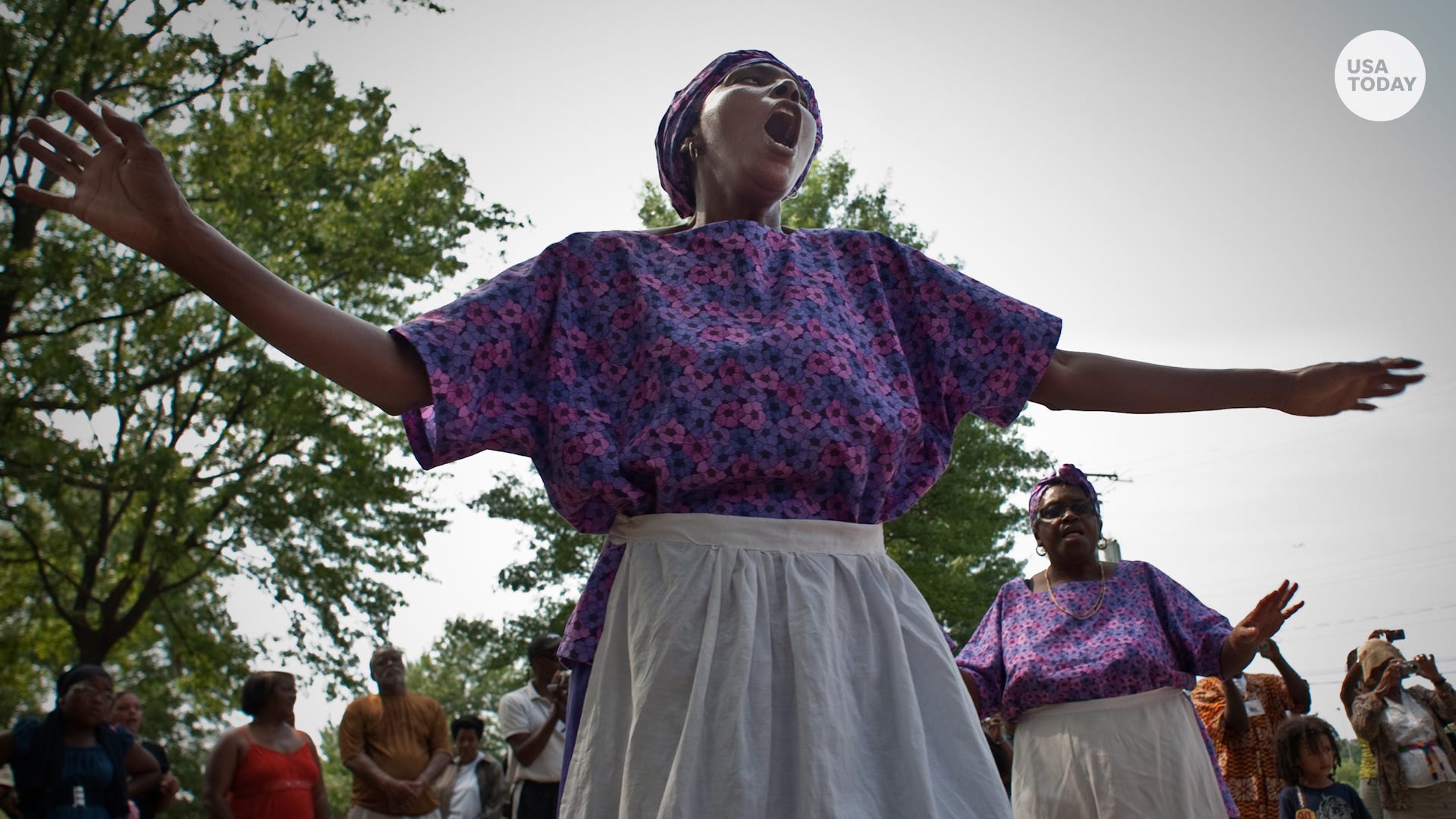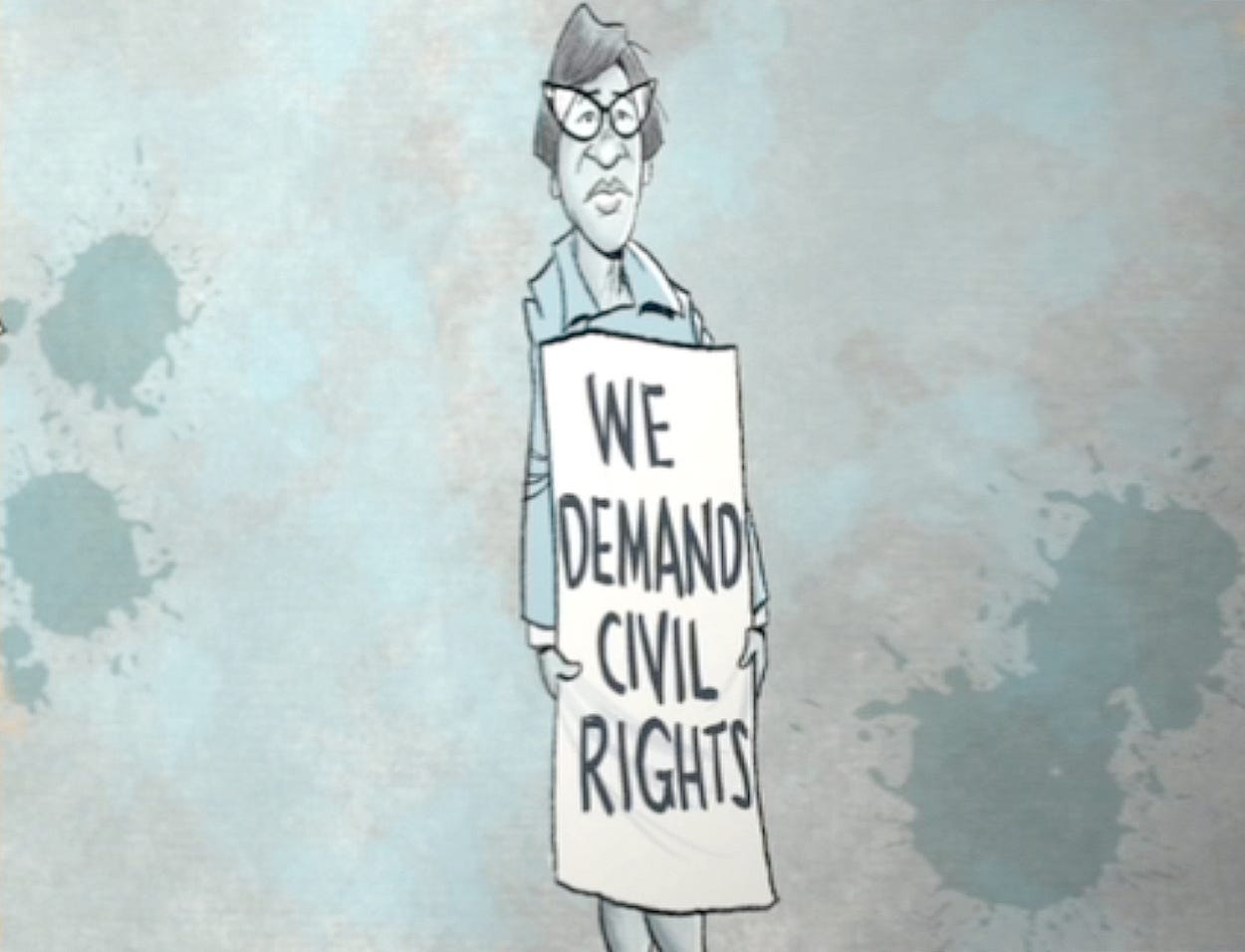Fact check: Black lawn jockey history tied to Jim Crow South, not Underground Railroad

The claim: Black lawn jockey statues are remnants of the Underground Railroad
A long-lasting defense of a statue many consider racist has regained traction on social media.
An August 2020 Facebook post recycles the long-standing claim that Black lawn jockey statues are not a product of the country’s racist past, but a relic of the Underground Railroad, a system of hidden routes used by runaway slaves escaping north to freedom in the pre-emancipation United States.
“These days people don’t know the real meaning behind these statues, so they vandalize and think of them as racist, etc.," the post says. "The history of the black ‘footman’ with a lantern is the exact opposite."
The Black lawn jockey is a statue that depicts a blackface caricature in horse-racing attire holding a lamp or a hitching ring. Its popularity peaked in the postwar U.S., prior to the civil rights movement. It became a signature lawn ornament for white families, particularly in the South, although decades of scrutiny over the statue’s racist overtones sapped its popularity.
The Facebook post, which includes a photo of a Black lawn jockey, asserts the statues were used in the Underground Railroad, with the statues' colors offering different messages to runaways searching for freedom. The post also claims the statues were “largely a northern thing” until Northerners "moved south" after World War II, and that they became a symbol for Southern whites sympathetic to the civil rights movement.
Though more than a year old, the post regained traction in mid-February, when it had more than 7,000 shares.
Follow us on Facebook! Like our page to get updates throughout the day on our latest debunks
“Thank you, this is a valuable piece of learning. You cannot always believe what you hear from people,” one user commented Feb. 14.
Other Facebook posts similarly invoke the Underground Railroad signpost explanation. In 2019, an account for Harriet Tubman Tours, for example, reiterated the claim. The claim has also long appeared in newspaper opinion sections and sources within reported pieces.
But experts consider the revisionist history highly dubious and say there is “little to no” evidence to support claims that the statues were part of any conspicuous signaling system. Instead, the statues are a relic of Jim Crow, a period of state-legitimized anti-Black racism predominantly in the South.
Paste BN reached out to the Facebook users who shared the post for comment.
Experts say claim doesn't add up
Experts say there is no proof Black lawn jockey statues were regularly used in the Underground Railroad.
Kenneth W. Goings, a professor emeritus at Ohio State University who has written on the depiction of Black Americans in the decorative arts, told Paste BN in an email the claim is "completely false." He said it's not consistent with what scholars know about the production history of these statues.
"I have read and have had students read dozens and dozens of narratives of escaped slaves, histories of the Underground Railroad and African Americans living in the North and South. Not once did anyone mention lawn jockeys," he said.
More: Is it racism or justice? The legal tangle behind a Black woman's six-year sentence for voter fraud.
Other scholars agree with him.
David Pilgrim – founder and curator of the Jim Crow Museum, a collection of racist artifacts at Ferris State University – wrote in a 2008 piece that the Underground Railroad narrative fails basic logical tests.
First, the color codes would have had to be interpretable by both runaway slaves and those who sought to help them, but not by the bounty hunters sent to capture them after the second Fugitive Slave Act of 1850. The statues, he added, would not have been valuable signals in the nighttime, when runaway slaves often traveled.
Fact check: Photo of woman holding rifle on bus not taken recently in Ukraine
Pilgrim also noted that, while some versions of the claim use modern interpretations of color – such as green for safety and red for danger – those interpretations would not have applied in much of the 19th century. That's because they developed after the emergence of the railroad, decades after the end of slavery in the U.S.
Though “it is possible that someone used the lawn jockey in” the capacity described in the Facebook post, Pilgrim wrote in 2008 that “there is no evidence that this practice was commonplace.” The Jim Crow Museum restated its negation of the claim in a 2020 article.
No evidence statue had northern origins, role in civil rights movement
Experts say several other claims in the post also ring hollow.
The post asserts that, after World War II, Black lawn jockey statues were used "mostly to show that the white homeowners supported early civil rights efforts" and were initially "largely a northern thing."

But Goings wrote in his 1994 book “Mammy and Uncle Mose” that the popularity of the Black lawn jockey in that era came from the statue’s value as a signpost of class and racial positioning for white Americans in suburban communities.
At an October 2021 panel on the history of the Black lawn jockey at the National Sporting Museum, Goings dismissed the idea that the statues were not a part of the Jim Crow South. He said the statues were meant to reinforce the racial hierarchies in place in the South, to elevate white residents and demean Black ones.
“These objects I see as an attempt to show African Americans as comical and miniature human beings and, more importantly, still happy to be working for their masters,” he said.
Scholars on the panel, including Goings, said these types of statues were likely not widespread until the rise of southern consumerism many decades after the end of the Civil War.
“As a cast-iron object that's being manufactured, they weren’t cheap,” Claudia Pfeiffer, deputy director of the National Sporting Museum, said during the panel.
Our rating: False
Based on our research, we rate FALSE the claim that Black lawn jockey statues are remnants of the Underground Railroad. Experts say they have found no proof to support any link to the Underground Railroad. They also say it's unreasonable to think the statues could have been universally understood by runaway slaves and their supporters but not by those opposing them. Instead, experts say the statues were a signpost of class and racial positioning for white Americans in suburban communities.
Sources:
- Chicago Tribune, Feb. 8, 1998, The Secret Life of the Black Lawn Jockey
- Dr. Adrienne L. Childs, Art critic and curator, Feb. 15, Phone interview with Paste BN
- Ferris State University Jim Crow Museum, accessed Feb. 18, Lawn Jockey Legends
- Ferris State University Jim Crow Museum, July 2008, Lawn Jockeys - July 2008
- National Sporting Museum, Jan. 1, "Mythbusting Lawn Jockeys: Untangling History from Lore"
- Kenneth W. Goings, Feb. 14-16, Email correspondence with Paste BN
- Kenneth W. Goings, 1994, “Mammy and Uncle Mose: Black Collectibles and American Stereotyping”
- The Sarnia Journal, July 12, 2020, Opinion: Lawn Jockeys: Racist Symbol or Underground Railroad guide
Thank you for supporting our journalism. You can subscribe to our print edition, ad-free app or electronic newspaper replica here.
Our fact-check work is supported in part by a grant from Facebook.